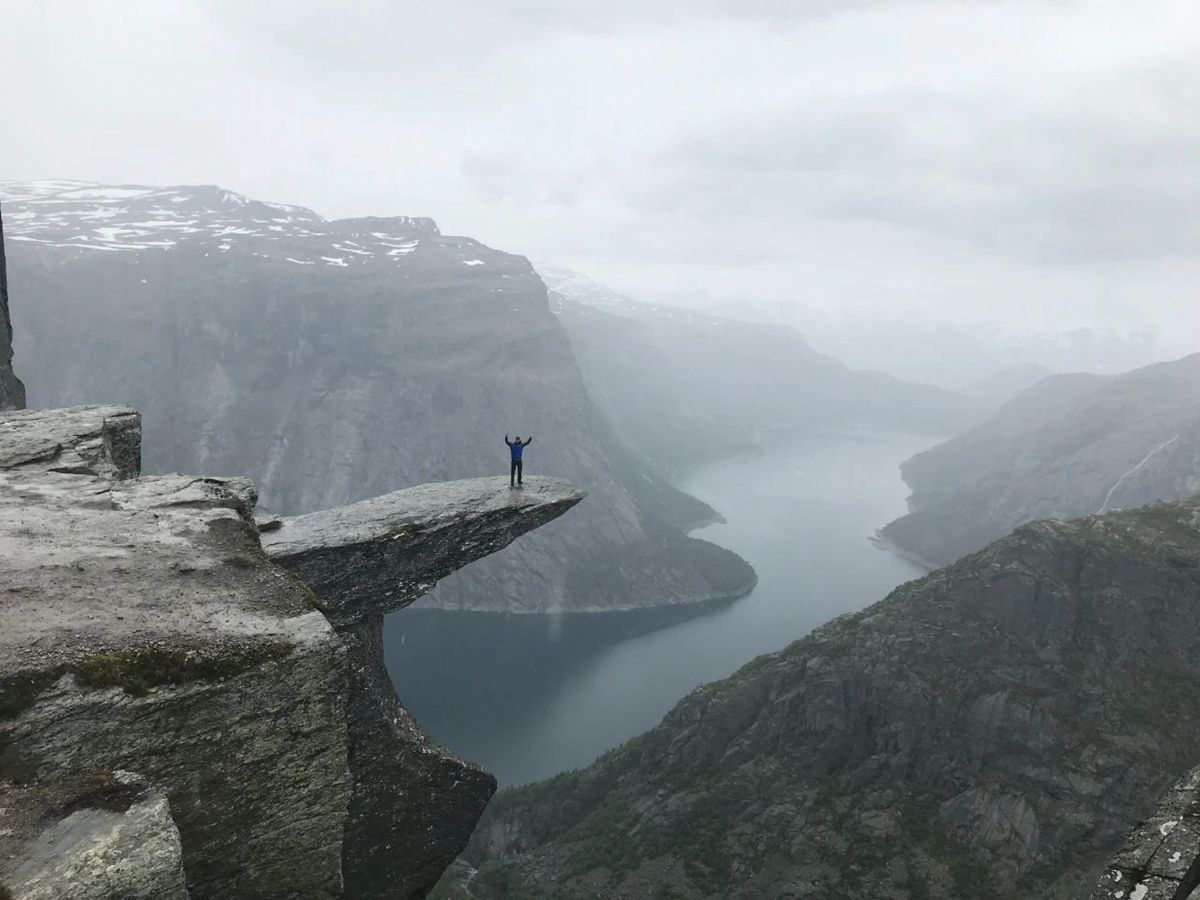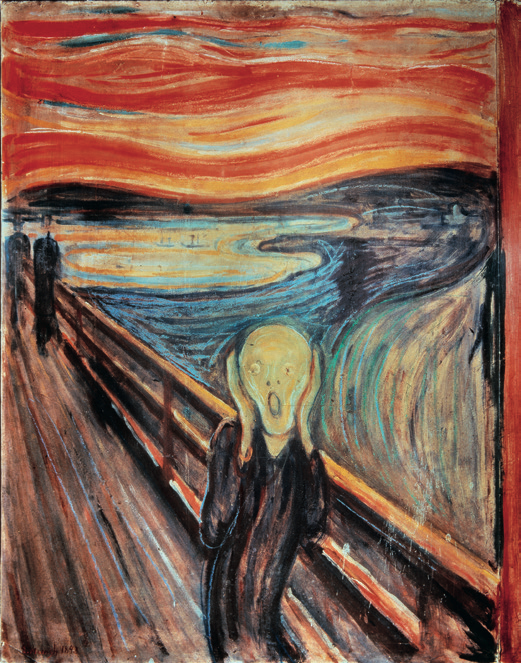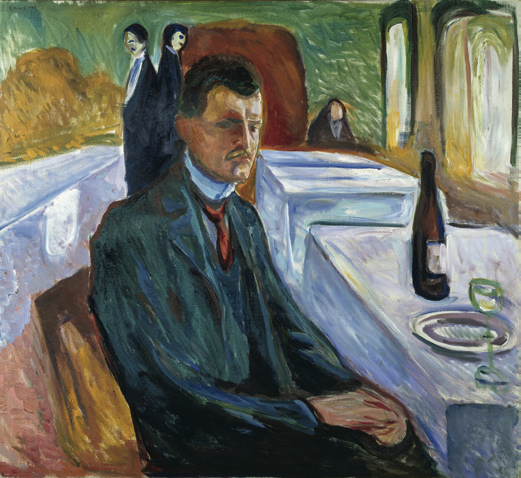Norway is a land of contradictions and wonders.
The warm Marine climate is just a step away from the cold tundra. There are remnants of the Ice Age, where time seems to have frozen. There are also sea water flowing here, indomitable.
Endless fjords, towering snow-capped mountains, deep forests... Here is the most extreme scenery, there are also harsh days and nights.
This is the birthplace of Arctic legends and fairy tales, but also the mighty Vikings once lived here.
Norway has a strong emotional expression in the Scream, but modern architecture shows a natural and open-minded side.
Fjords: The soul of Norway
The fjords, Norwegians are proud of, are their own soul.
In 2004, National Geographic magazine named it "the world's top unspoiled natural beauty." 80% of the world's fjords are in Europe, and most of Europe's fjords are in Norway.

The fjords are the remnants of a glacier that two million years ago was part of an ice age. At that time, all of northern Europe was covered with snow and ice.
For hundreds of thousands of years, huge glaciers have scraped away the valleys of the mountains and turned the steep mountains into gentle hills, forming a special landscape with cliffs on both sides and wide and deep bases.
The land began to sink under the enormous weight of the glacier, and then the weather warmed, the glacier melted, and the sea level rose. Ocean currents carry warm water in.
The glaciers receded and the sea flooded in. These sunken valleys form one of the world's most extreme "coastlines" : fjords.
This, combined with year after year's pounding of the Atlantic Ocean, gnawed the "shoreline" into countless jagged gaps, resulting in Norway's world-famous fjords.
As a result, the landscape of the fjord is remarkable and varied. Modern geographers have determined that if Norway's 101,000 km long fjords, bays and island coasts were drawn in a straight line, they could circle the Earth two and a half times.
National Geographic describes Norway's fjords in terms of music:
"The world's narrowest and most beautiful fjord", Galengerfjord, is like a stirring Beethoven's fifth Symphony of fate; Full of primitive charm, "Sonnfjord" is like the famous work of Russian composer Stravinsky, "The Rite of Spring," which makes people throb. Compared with other steep fjords, the scenery of "Hardangfjord" and the rolling hills are like the song of "Four Seasons" by Vivaldi, known as the "King of Concertos", which makes people feel relaxed and happy.
Standing in front of the fjord, with the sheer cliffs on one side and the endless sea on the other, there was a sense of isolation before the enormity of the scene.

The famous Trolltunga Rock in the Norwegian fjord (meaning "troll's tongue")
Liu Cixin wrote in the Mountain: "I don't expect to get anything from the mountain." When I first climbed to the top of the mountain, I felt a sense of renewal as I watched the plains I grew up on stretch out below."
Nature always has the most direct power and impact on the human heart, in front of this relic formed by the force of millions of years of nature, you can feel the grandeur of time, but also feel the solidification of time. A kind of "three days in the mountains, a thousand years in the world" eternal realm.
Cry not only pain, but also life.
I'm sure you're familiar with this painting, Munch's The Scream.
But what you may not know is that the sky is burning with fire, everything is swept by a huge storm, and this scene, which seems to be curled up in pain, is the beautiful Norwegian fjord described above, and if you look closely, you will see the city and the hills on the other side of the painting, and you can also see several sailing ships in the distance.

The Scream (1893)
Edvard Munch was born in 1863 in Norway. He suffered from severe hereditary mental disorders and familial tuberculosis, and had a difficult childhood, losing his mother at the age of five and his sister Sophie, who had raised him, dying of tuberculosis when he was 14.
Illness, death and suffering accompanied his childhood and boyhood, and this is reflected in his paintings.
In The Scream (which is actually his self-portrait), his face resembles a skull or a mask, recognizable only from it as a staring gaze and a mouth that is wide open and elongated until it is distorted.
The image is still and silent, but it is reminiscent of a scream so loud that it almost punctured the eardrum. It was a roar never heard before, so painfully shouted that it was frightening to be unable to erase it from memory.
"Clouds as scarlet as blood, like tongues of fire, hung over the blue-black fjord, and I thought I heard the endless roar of nature."
Munch, White Review Magazine, November 15, 1895
Munch often used these code languages and symbols to hide, reveal or play a role in his works - so he is also considered a master and pioneer of modern expressionist art.
Munch's other favorite self-portrait, "Self-Portrait with a Bottle," is surrounded by customers and waiters, who also omit facial features and wear what appears to be a masked face. The perspective of the whole picture exaggerates his isolation.

Self-portrait with a Bottle (1906)
These self-portraits are his confrontation with his own personality, the confession he expresses with his brush, the consciousness and subconscious of himself. Munch lived with and fought his illness and pain all his life.
In 1397, Norway joined the Kalmar Union and remained under Danish rule for more than 400 years. In 1814, it was ceded by Denmark to Sweden and ruled by Sweden for nearly 100 years until 1905, when it regained its independence from the Swedish Union. It was then ruled by Nazi Germany until it was liberated in 1945.
During these years, the fear of isolation in the new era, the anxiety about the future, also affected Munch and the Norwegians of the time. During Nazi German rule, Munch's work was labeled "decadent" and 82 of his works were confiscated by the Nazi government.
In The Night on Carl John Street (1892), there is a sick night in this painting, a feeling of suffering but inescapable shackles of life. The expression of all the characters has been erased, and Munch appears on the right side of the picture, dressed in black, with his back to us, walking alone away from the crowd he has depicted.
Although this past tormented Munch, he used his brush to preserve his suffering in many of his paintings. Pain shaped his life and was the source of his art.
"I wanted to create an ideal world with these paintings," Munch says. "It's a place that's all there is to it. I wanted the visual expression to be Norwegian, but at the same time universal."
Munch expresses not only himself, but also the land he loves and loves, Norway.
Norway is located in the high latitude, in the winter will enter the long night, by the summer, Norway's night sky is covered by white night. This painting, Summer Night in Ostgotland, depicts a white night in Norway.
Munch placed two parallel triangles at the end of the scene, and the picture with warm and cold tones is full of vitality, but also presents a mysterious atmosphere. Compared to traditional Impressionist painters, his vibrating brush strokes have a more fluid visual effect.

Summer Nights in Ostgotland (1904)
This was another of his achievements in expressionism: taking different situations, places, or scenes of life and pulling them apart in order to delineate their meaning in detail - to uncover the surface of things.
At the same time let people know: he will never remain silent, he shouted out, not only pain, but also life.
"It is a symbol left by Munch that seems to grasp us, to shout at us, to stir up our unease, and yet to bring a soothing power..."
Jean Clair, A Paean to Perception, 1996
Munch especially admired the philosopher Nietzsche, who painted this painting in 1906 in a setting very similar to the famous "Scream."

Nietzsche (1906)

